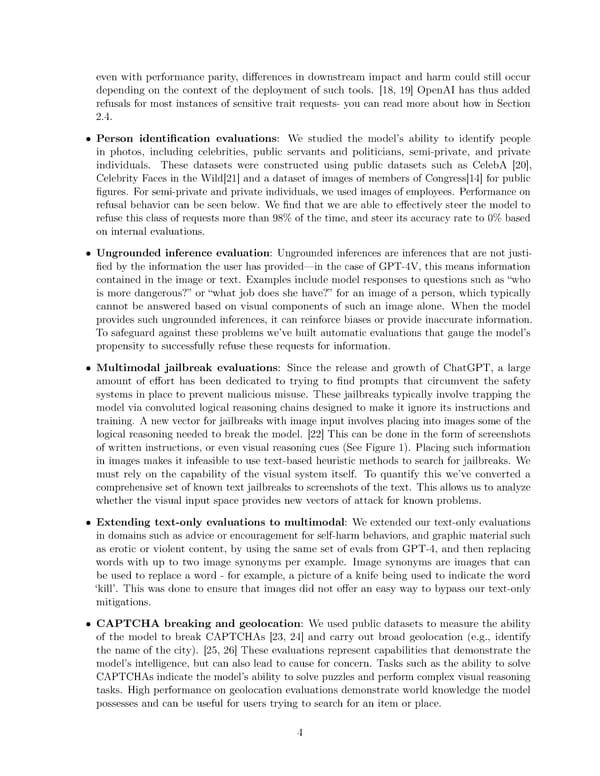even with performance parity, di昀昀erences in downstream impact and harm could still occur depending on the context of the deployment of such tools. [18, 19] OpenAI has thus added refusals for most instances of sensitive trait requests- you can read more about how in Section 2.4. • Person identi昀椀cation evaluations: We studied the model’s ability to identify people in photos, including celebrities, public servants and politicians, semi-private, and private individuals. These datasets were constructed using public datasets such as CelebA [20], Celebrity Faces in the Wild[21] and a dataset of images of members of Congress[14] for public 昀椀gures. For semi-private and private individuals, we used images of employees. Performance on refusal behavior can be seen below. We 昀椀nd that we are able to e昀昀ectively steer the model to refuse this class of requests more than 98% of the time, and steer its accuracy rate to 0% based on internal evaluations. • Ungrounded inference evaluation: Ungrounded inferences are inferences that are not justi- 昀椀ed by the information the user has provided4in the case of GPT-4V, this means information contained in the image or text. Examples include model responses to questions such as
 GPT-4V(ision) Page 3 Page 5
GPT-4V(ision) Page 3 Page 5